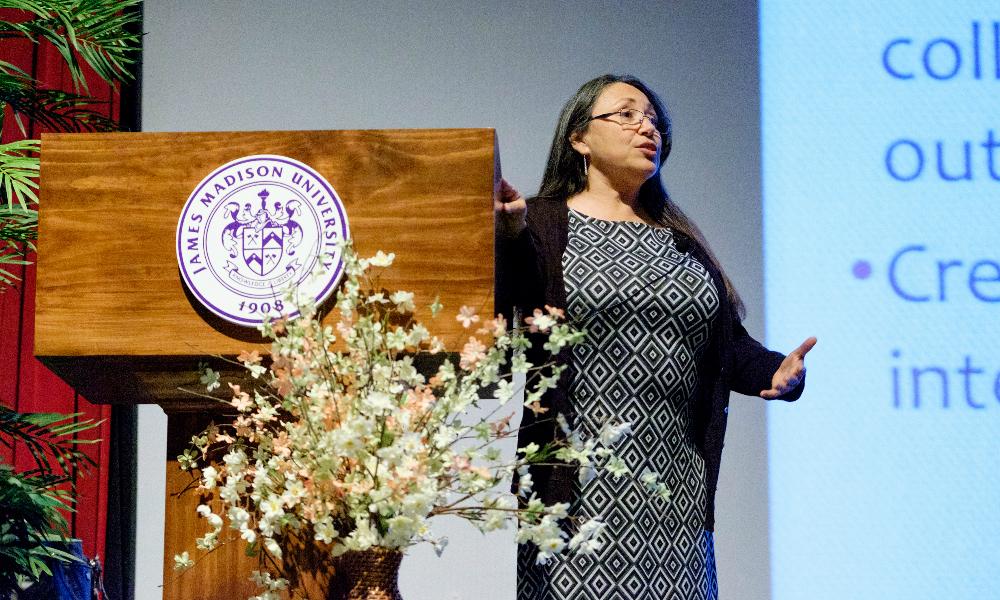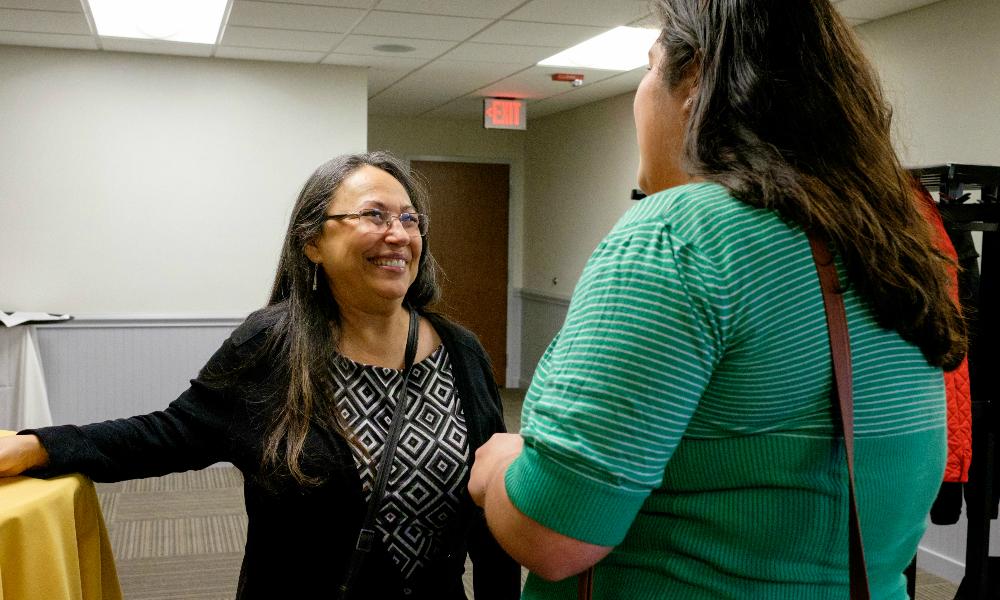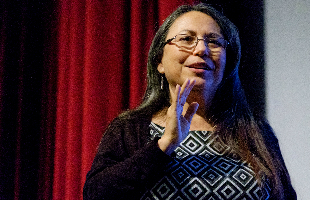The importance of interactions in higher education: A conversation on diversity
A conversation about diversity
Education
SUMMARY: Dr. Sylvia Hurtado, diversity scholar, speaks at the final Madison Vision Series presentation of the semester on the importance of interactions and diversity on campus.

|
“Diversity and education go hand-in-hand,” expressed President Jonathan R. Alger as he welcomed diversity scholar Dr. Sylvia Hurtado as the final Madison Vision Series presenter of the semester. Hurtado emphasized the importance of communicating across difference and strong social skills. Through diverse interaction of people and ideals, students can gain new perspectives and be further prepared for the workforce and democratic society.
She asserts that although we are “lazy thinkers,” through group interactions and relationships, students are forced to think outside of themselves and learn. As higher education continues to recognize the value of diversity, the next step is to facilitate authentic intergroup relations and give students the opportunities to have these experiences.
|
“We are socialized in our own backgrounds, in our own beliefs, and have not always had interactions with different groups" Sylvia Hurtado |
Challenges
When in diverse situations, she asserts that we don’t always know how to interact.Hurtado discusses three challenges that we face in higher education. First, we desire to assume that everyone is the same and can be treated the same; however, she claims, not everyone comes to higher education with the same advantages. Second, without diversity we would gravitate toward a groupthink mentality that may ignore disparities. She states, “If we were all the same we would be kind of boring.” Lastly, most biases are personal and we place stereotypes on others.
Importance of interactions

Hurtado is the former director of the Higher Education Research Institute, which houses the Cooperative Institutional Research Program, the longest-running empirical study of higher education involving data collection of students and faculty. CIRP is celebrating 50 years of data collection on higher education. CIRP's studies show that when there is more diversity on campus, the relationship between discrimination and sense of belonging decreases. Thus asserting not only do we need to provide a pathway for minority students on campus, we also need to create interactions and activities to create a sense of belonging.
Another important setting she mentions is during freshman year. She stresses that we need to focus on transitions and reducing uncertainty for underrepresented students from the start. Everyone struggles with transition. Let them know they are not alone.
Promising Practices
These practices include intergroup dialogue in the classroom. One can do this by having students get to know each other, learn how to listen actively, talk about differences then move to hot topics. “I think relationships are key,” says Hurtado.
|
“I would like to applaud the JMU faculty and staff…and I want to encourage you to continue to have discussion-based classes and you will find that your students will grow… so thank you for that.” Gabriel Lee, junior, WRTC major |
Also, professors should set up their classrooms so their students can make mistakes and have hard conversations before they go out into the real world. She prefers to make not only a safe space, but a brave space where a student can take risks and push people outside of their comfort zone.
Lastly, she says, it is important to look at conflict as an opportunity to learn. If you are building the environment and creating interactions with respect, conflict is a platform for a new understanding and growth for students.
The Madison Vision Series will resume on September 15. Announcements regarding next academic year's speakers will be posted at www.jmu.edu/president/mvs.
